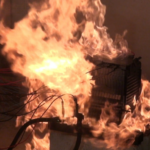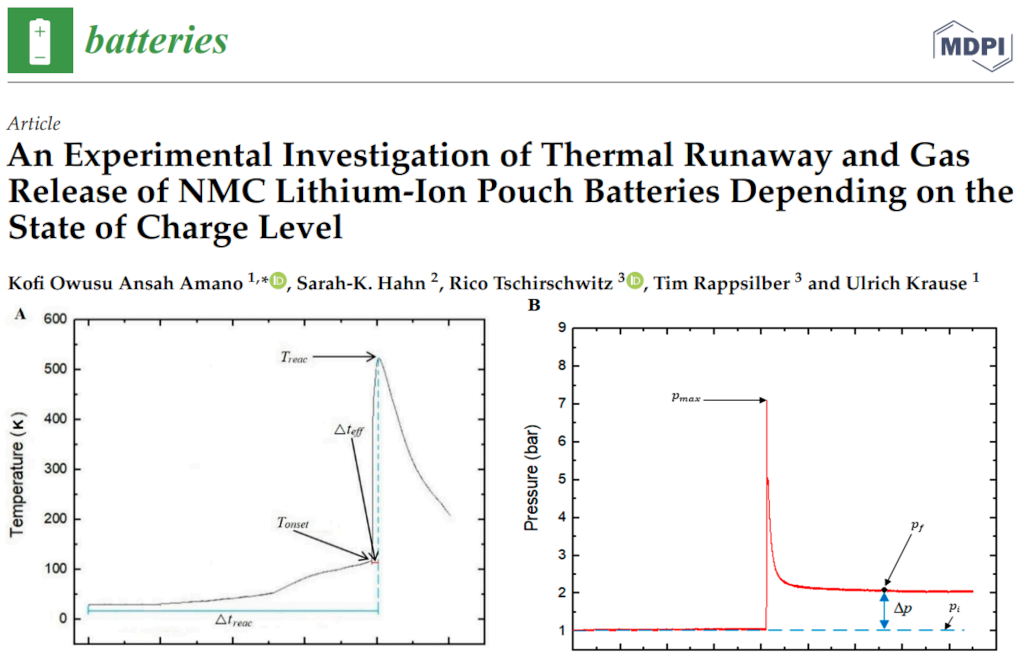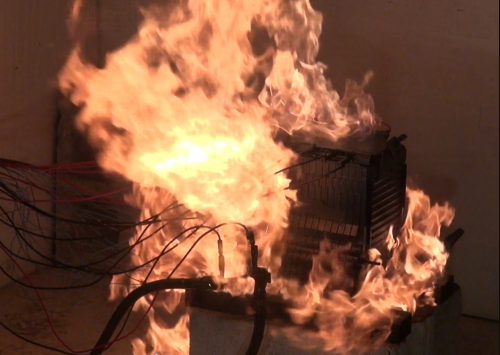
Lithium batteries are classified as incorporating hazardous materials because they can, in rare circumstances, present a risk of thermal runaway which can lead to explosion. Here are some explanations on this phenomenon and the sequence of events, in particular chemical, which occur.
Use case
We will take as an example a battery module equipped with NMC cells, which are still the most common today. We will also put ourselves in an abuse case related to electrical overload. In fact, more than 70% of incidents take place while the battery is charging. The values given here are indicative and are only intended to give an order of magnitude.
Course of events
1. Normal operating state of the battery.
The battery is maintained within its normal operating range
– voltage range ~ 3.6V-4.2V (measurements carried out on each cell)
– temperature range ~0°C-50°C (sensors in modules)
– mechanically intact battery (mechanical protections)
2. T0: A feared event causes the battery to leave its normal zone
– Overload with voltage > 4.2V
– cell temperature > 60°C
– mechanical abuse such as drilling
– internal fault due to battery breakdown or wear

3. T0 to T0 + 30 mins. Slow warm-up
The temperature of the cells heats up slowly to 80°C due to the electrical characteristics of the cell.
4. T0+ 30 mins to T0 +60 mins. Quick warm-up and first releases
From 80°C, the electrolyte begins to decompose causing the first generations of gas. The temperature rises further, going beyond more than 100°C.
The pressure in the cell rises, the safety valve is still tight.
5. T0 +60mins to T0+70mins. Acceleration of decompositions
Above 130°C it is the SEI interface layers which now decompose.
Gas generation is greater, temperature and pressure continue to rise

6. T0+70mins to T0+75mins. Runaway and opening of the safety valve
The temperature exceeds 180°C and it is the cathode which is now decomposing.
The temperature increase is very rapid.
The pressure rises until it triggers the opening of the safety valve, which prevents an explosion of the entire module.

7. T0+75mn to T0+80mn. Peak thermal runaway
The temperature is at its peak around 600-1000°C. Flames and large volumes of burning gases are generated. The risk of explosion is present but strongly limited by the open valve.

Conclusion
The triggering of dangerous situations linked to a lithium battery comes from an event taking it out of its normal operating range, most often an overload.
The sequence of events is systematically linked to internal heating generating chemical reactions which increase this generation of heat (hence the concept of thermal runaway). Thermal management of the battery is important and taken into account by manufacturers who systematically integrate temperature sensors into the heart of battery modules.
Note that this phenomenon is identical on LiFePo4 type batteries. However, the temperature thresholds are higher, thus reducing the risk of thermal runaway.